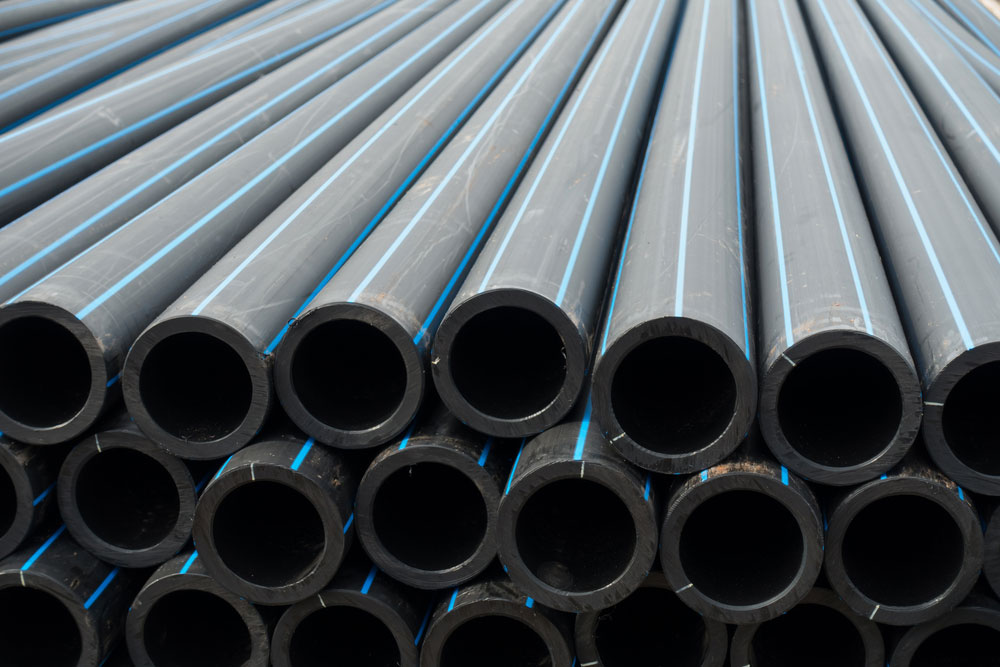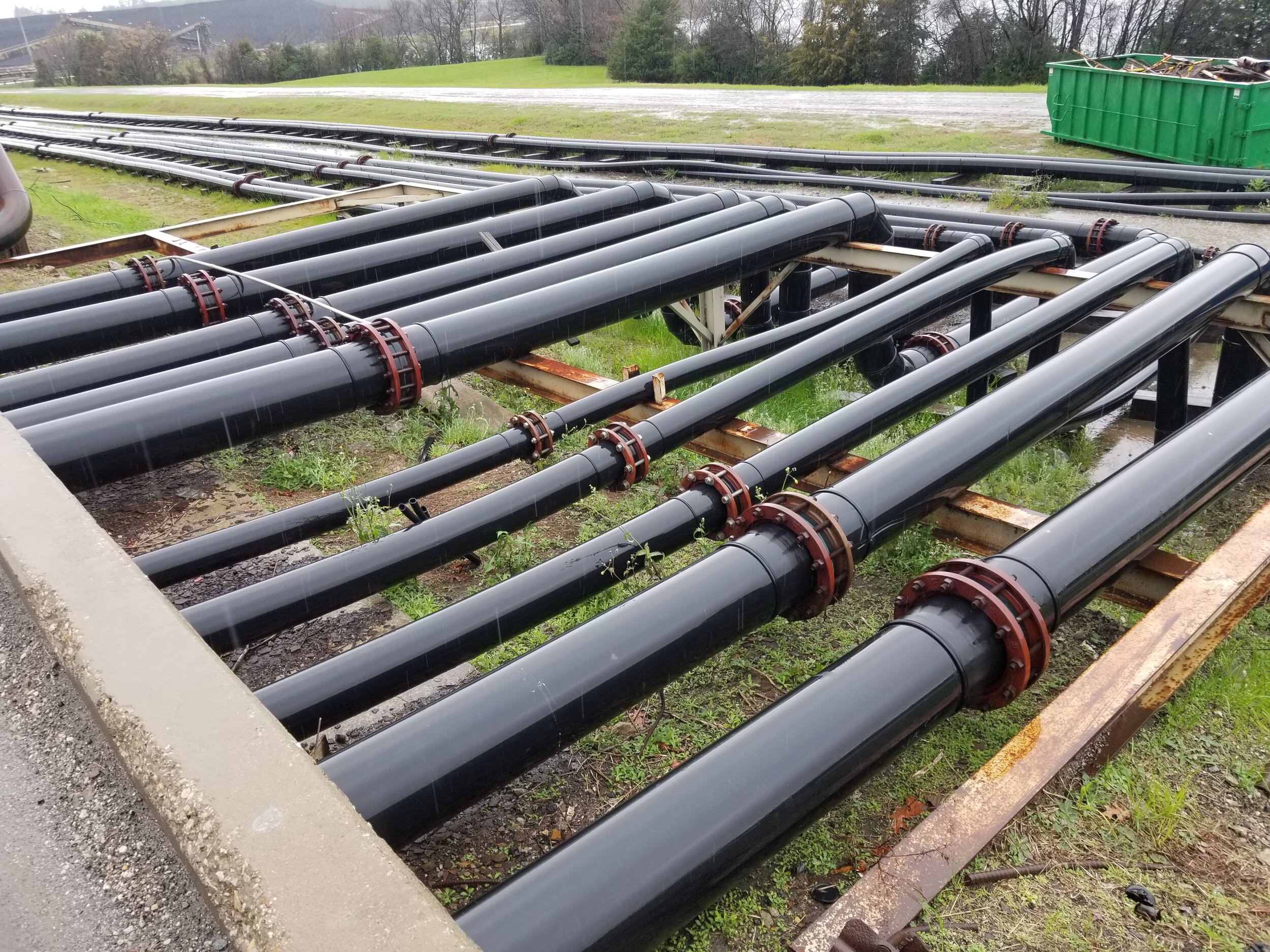Check Out the Production Refine Behind High-Quality HDPE Pipe and Its Applications
The production process of premium HDPE pipes is elaborate and systematic. It begins with the selection of resources that improve efficiency. Following this, ethylene undergoes polymerization to develop material, which is after that shaped via extrusion. Quality control is paramount, ensuring that the end product fulfills rigorous criteria. However, the journey of HDPE pipelines doesn't end with production. Their applications throughout different markets expose a more comprehensive relevance worth examining.
Recognizing HDPE: Residences and Advantages

High-density polyethylene (HDPE) is a versatile polycarbonate known for its durability and resistance to numerous ecological variables. This material displays superb tensile strength, making it appropriate for requiring applications. Its low-density framework adds to a lightweight item, helping with convenience of managing and installment. HDPE also showcases impressive resistance to chemicals, which lessens degradation when revealed to extreme materials.
The product's low moisture absorption additionally boosts its durability, making it ideal for usage in pipelines and tank. In addition, HDPE is resistant to ultraviolet (UV) radiation, ensuring that items keep their integrity even when exposed to sunlight. Moreover, its versatility permits the creation of elaborate forms without jeopardizing strength. The green nature of HDPE, frequently originated from recycled products, includes in its charm, advertising sustainable methods in production. Generally, these buildings and benefits make HDPE a preferred option for numerous industrial and customer applications.
Raw Product Choice for HDPE Production
The option of basic materials for HDPE production is vital to confirm the final product satisfies the preferred requirements and high quality criteria. High-density polyethylene (HDPE) is mostly produced from polymerized ethylene, originated from nonrenewable fuel sources such as gas or crude oil. The high quality of these feedstocks substantially affects the mechanical and thermal buildings of the final HDPE.
Ingredients additionally play a significant role in boosting HDPE's efficiency, consisting of antioxidants, UV stabilizers, and colorants, which boost sturdiness and resistance to environmental factors. The selection process have to think about not only the chemical structure of the raw materials yet also their handling attributes to assure reliable production.
The sourcing of raw products must focus on sustainability and conformity with ecological laws, as liable techniques are important in today's market. Inevitably, mindful basic material option lays the foundation for creating premium HDPE pipelines appropriate for varied applications.
The Extrusion Process: Forming HDPE Pipeline
The extrusion process plays a vital role fit HDPE pipes, starting with careful product preparation techniques that assure suitable flow and uniformity. Just as vital is the design of the die, which straight influences the final measurements and surface area top quality of the pipeline. With each other, these factors add greatly to the efficiency and high quality of HDPE pipe production.
Material Preparation Strategies
Efficient production of HDPE pipelines begins with thorough product preparation strategies, especially the extrusion process. Throughout this stage, high-density polyethylene resin is very first dried to eliminate dampness, making sure perfect circulation characteristics. The resin is then fed right into the extruder, where it undertakes home heating and melting, transforming into a viscous state. This home heating process is thoroughly regulated to maintain the product's integrity and performance. The liquified HDPE is compelled via a die, forming it into a constant pipeline kind. Correct temperature management during extrusion is necessary, as it directly influences the material's buildings and the final product quality. Once shaped, the HDPE pipeline is cooled and cut to defined sizes, all set for succeeding processing and applications.
Die Layout Importance
Precision in die style plays a crucial role in the extrusion procedure of HDPE pipes. The die offers as the last shaping device, directly influencing the pipe's measurements, wall surface density, and surface area coating. A well-designed die warranties consistent material flow, minimizing issues such as irregularities and weak areas. The geometry of the die should be maximized to fit the specific residential properties of HDPE, including its thickness and thermal actions throughout extrusion. Additionally, the cooling rate of the material as it passes via the die can markedly impact the pipeline's architectural honesty. Spending in innovative die innovation is important for manufacturers aiming to produce premium HDPE pipelines that fulfill sector standards and client assumptions.
Quality Control Actions in HDPE Manufacturing
Different elements influence the top quality of HDPE pipeline production, reliable top quality control procedures are crucial to ensure uniformity and integrity in the final item (hdpe pipe in stock Midland TX). Trick quality assurance techniques consist of rigorous material assessment, validating that the raw polyethylene fulfills established standards for purity and density. During the extrusion process, specifications such as temperature, stress, and cooling time are carefully checked to keep dimensional precision and structural stability
Furthermore, post-production testing is essential; makers frequently perform hydrostatic tests to assess the pipe's strength and resistance to pressure. Aesthetic evaluations for surface area issues better enhance quality control. Accreditation from relevant requirements companies, like ASTM or ISO, supplies an extra layer of reputation. By executing these extensive quality assurance actions, makers can decrease problems, improve performance, and ensure that the HDPE pipes satisfy the specific demands of various applications, eventually resulting in consumer complete satisfaction and rely on the product.
Applications of HDPE Pipeline Across Industries
HDPE pipelines are used throughout different industries due to their sturdiness and flexibility. In water circulation systems, they ensure reliable shipment, while in wastewater monitoring, they supply dependable options for waste transportation. Furthermore, farming watering networks profit from HDPE's resistance to rust and versatility, making it an ideal selection for modern farming methods.

Water Circulation Systems
A substantial number of industries depend on high-density polyethylene (HDPE) pipelines for reliable water circulation systems. Recognized for their resilience and resistance to deterioration, HDPE pipelines are widely used in metropolitan water system networks, farming irrigation, and industrial applications. Their light-weight nature helps with very easy handling and setup, reducing labor prices and time. In addition, HDPE pipes can suit different pressure levels, making them suitable for both reduced and high-pressure systems. hdpe pipe in stock Midland TX. The flexibility of the product permits for seamless integration right into existing framework, decreasing the demand for extensive excavation. HDPE's resistance to chemical seeping assurances that the water supplied stays secure and clean, making it an excellent option for maintaining the high quality of drinkable water across various industries.
Wastewater Management Solutions
Effective water distribution systems likewise lead the way for cutting-edge wastewater monitoring solutions, where high-density polyethylene (HDPE) pipes play a considerable function. Renowned for their sturdiness and resistance to corrosion, HDPE pipes are optimal for transporting wastewater in various settings. Their versatility permits for easy installation in complicated atmospheres, lessening the demand for extensive excavation. Additionally, HDPE's smooth interior surface area reduces friction, improving circulation prices and efficiency. These pipes are additionally resistant to chemical leaching, making sure that pollutants do not jeopardize the surrounding setting. Industries, municipalities, and treatment centers progressively rely upon HDPE pipes for their integrity and long life, making them a recommended option for contemporary wastewater administration systems. This adaptability underscores the important significance of HDPE pipelines across various applications.
Agricultural Watering Networks
Agricultural irrigation networks benefit significantly from using high-density polyethylene (HDPE) pipes, which offer efficient and trustworthy water delivery to plants. HDPE pipes are lightweight, making them easy to carry and set up, while their versatility permits various configurations in varied surfaces. These pipes demonstrate excellent resistance to corrosion, chemicals, and UV radiation, making certain sturdiness in extreme agricultural atmospheres. In addition, their smooth indoor surface area minimizes rubbing loss, maximizing water circulation and decreasing energy expenses associated with pumping. The durability of HDPE pipelines, frequently going beyond 50 years, adds to lower maintenance and substitute expenses. Farmers significantly rely on HDPE pipes to boost watering efficiency and advertise sustainable agricultural methods, ultimately leading to boosted plant returns and resource conservation.

Future Patterns in HDPE Pipe Innovation
As the demand for lasting and reliable facilities expands, innovations in HDPE pipe innovation are positioned to change different industries. Arising trends consist of the integration of clever innovations, such as sensing units and IoT capacities, which assist in real-time tracking of pipe conditions, lowering maintenance costs and avoiding leakages. In addition, the advancement of sophisticated production techniques, such as 3D printing, is making it possible for the manufacturing of facility, tailored pipeline layouts that accommodate details project requirements.
The focus on recycling and circular economic climate methods is driving the advancement of HDPE pipelines made from recycled products, boosting sustainability. Boosted jointing methods, such as electro-fusion and mechanical fittings, are likewise enhancing setup effectiveness and integrity. Finally, the expanding emphasis on environmental regulations is pushing makers to adopt greener manufacturing processes, making sure that HDPE pipelines not just meet industry requirements but likewise cultivate an even more sustainable future for framework growth.
Regularly Asked Concerns
Just How Does HDPE Contrast to Various Other Plastic Products?
HDPE surpasses several other plastic products regarding longevity, chemical resistance, and versatility. Its reduced density and high tensile toughness make it optimal for numerous applications, usually exceeding options in get more info both performance and durability.
What Are the Ecological Effects of HDPE Manufacturing?
The environmental effects of HDPE manufacturing include greenhouse gas discharges, energy consumption, and prospective air pollution from manufacturing processes. Additionally, inappropriate disposal can lead to dirt and water contamination, increasing concerns concerning long-lasting eco-friendly impacts.
Can HDPE Pipes Be Recycled?
Yes, HDPE pipes can be recycled. Several facilities accept made use of HDPE for processing, changing it right into brand-new items. This recycling adds to sustainability initiatives, decreasing plastic waste while saving sources and energy in the manufacturing cycle.
What Is the Lifespan of HDPE Piping?

How Do Temperature Level Variations Affect HDPE Pipe Efficiency?
Temperature variations considerably affect HDPE pipeline performance, impacting flexibility and stamina. Heats can cause softening, while reduced temperature levels may cause brittleness, inevitably influencing the pipe's durability and suitability for numerous applications in varied settings.